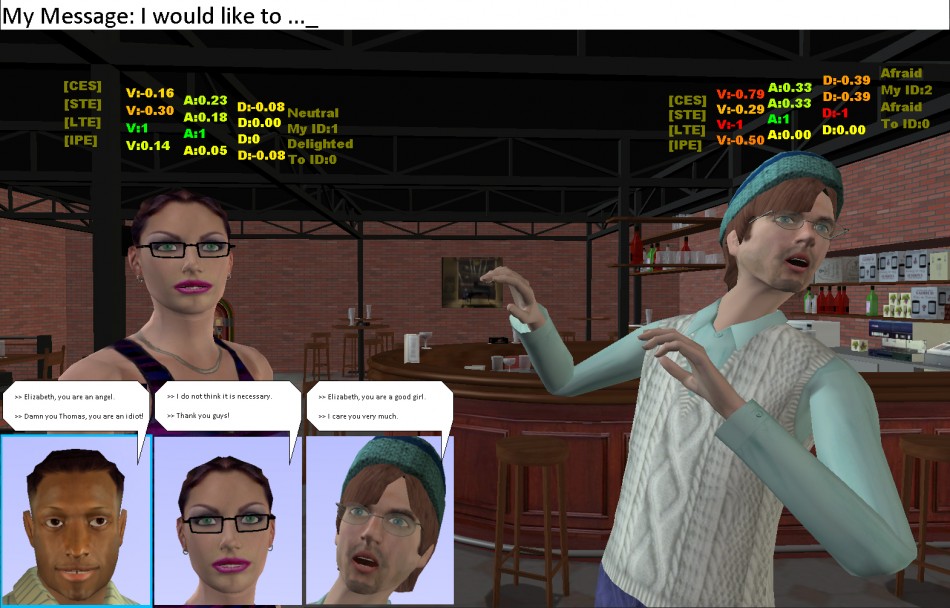
Rocket Scientists on “Big Data” and Representing Things: The ISEA2012 Blog
There’s got to be a joke in here somewhere. An astro-physicist walked into a room full of artists. Name of Roger Malina, he (as we used to say) threw up a few slides on the board aka the screen of the DYNA Theater of the Albuquerque Natural History Museum; one of them was Cezanne’s Mont Sainte-Victoire. All this by way of saying, “I used to live there (in Provence, France). Now I live in Dallas.” (I paraphrase.) That was about where the keynote’s familiarity to me (who throws up slides on boards occasionally) vanished, and immersion in somebody else’s knowledge and observations got really really interesting.
In the DynaTheater literally every seat was taken (possible capacity: 500?), but a show-of-hands requested by Malina revealed only six scientists in the room and possibly four people who self-described as working for high-tech company employers. What Malina, who was longtime editor of MIT’s Journal Leonardo and chairman of the Leonardo organization described first to this rapt crowd was his recently new appointment as Distinguished Professor of Art and Technology at the University of Texas, Dallas where he is developing Art-Science R and D and Experimental publishing research.
He is also by training (as noted) a rocket scientist who discussed the “big data” problem from astronomy (scientists can see millions of galaxies at once now, but they still only “see” 3% because 97% of the sky is dark. Lots of simulated data has made data grow like crazy). To the cross-disciplinary mix he applied one compact line that I have been haunted by since last Thursday.
As preamble, Malina said now is very like the 1850s, a time of cultural shock. In Malina’s own lifetime, astronomers went from being able to see 1 galaxy at a time to being able to see those millions of galaxies at a time (a 1.5 gigapixel camera called Pan-STARR). Yet getting back to human sensing instruments,as noted 97% of the sky is dark.

Here to the compact line that goosebumped my flesh a little bit. As an analogy to what is wrong with life. We used to be “meaning-rich and data-poor.” Now we are data-rich and meaning-poor. Let’s have that again:
We are data-rich and meaning-poor.
Artists in the house?
Outcome-wise, as the rocket scientist with twin appointments in departments of art and physics at UT Dallas notes, this carves out a pretty big bed for artist-humanists and thinkers who come at “post-digital humanities” (also a new one for me), from their or our point-of-view.
History is never far behind or far from cyborgian future prognostications, and hence it bears repeating that because arts-and-humanities have always been concerned with systems of representation, science-and-technology, are going to need to artist thinking-visualizing to develop”ontologies.” Ontologies: Languages that allow people to talk about and name things as a prelude to being able to show what they’re like (in parlance, what they look like, although it is possible in this scenario of futurist ontologists that what things sound like might be a closer way to representing what’s out there-in here.) [P.s. Leonardo has an open call for papers on sound art now. Deadline: October 15. Link: Here.]
Also (please) consider that naming things, naming new things, is in the history of humankind something that was considered a godlike practice. I don’t even know what the God particle is but I am sure that people who attended ISEA2012 do.
Among the scarier things, as well as the enlightening things, to come out of such keynote speeches as Roger Malina’s to ISEA2012, is revelation that work on virtual humans is under way. Virtual humans might give technologists a better way of understanding of “big data” through the evolution of new virtual senses we don’t possess (I’m still musing on that one). As to perfectability, these virtual humans might not rely on eyes to see. (I can’t quite wrap around that being an improvement over our own sensate conditions, but hey, I really love looking at art.)
All this came out of a one-hour long lecture and puts the work of post-digital humanists right smack up at the front row from now on. Whatever they are thinking about when they are thinking about ways to perfect the explorations that science is engaged in, or the ways to better comprehend the bigness of big data, is going to be really, really important. And art is the thing that humans have that machines may not.
